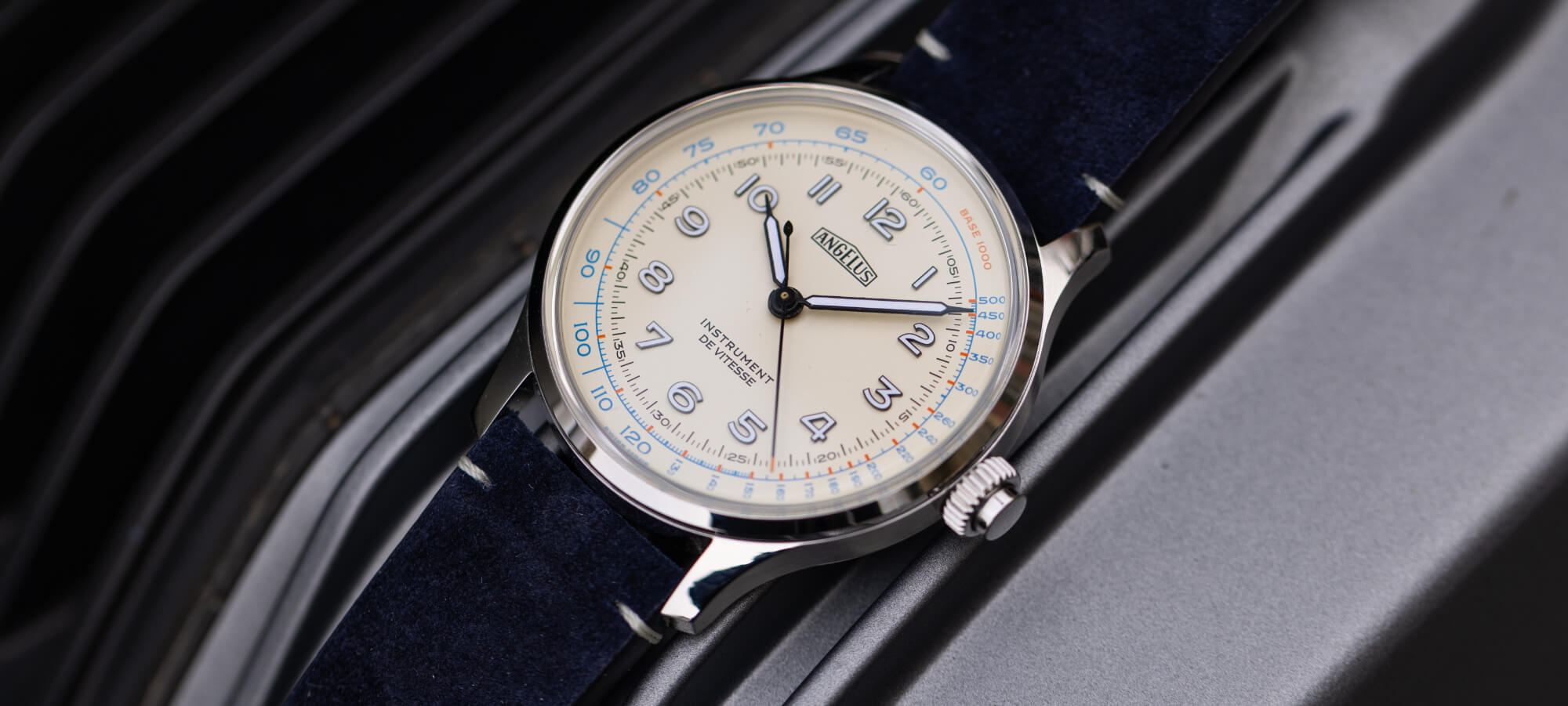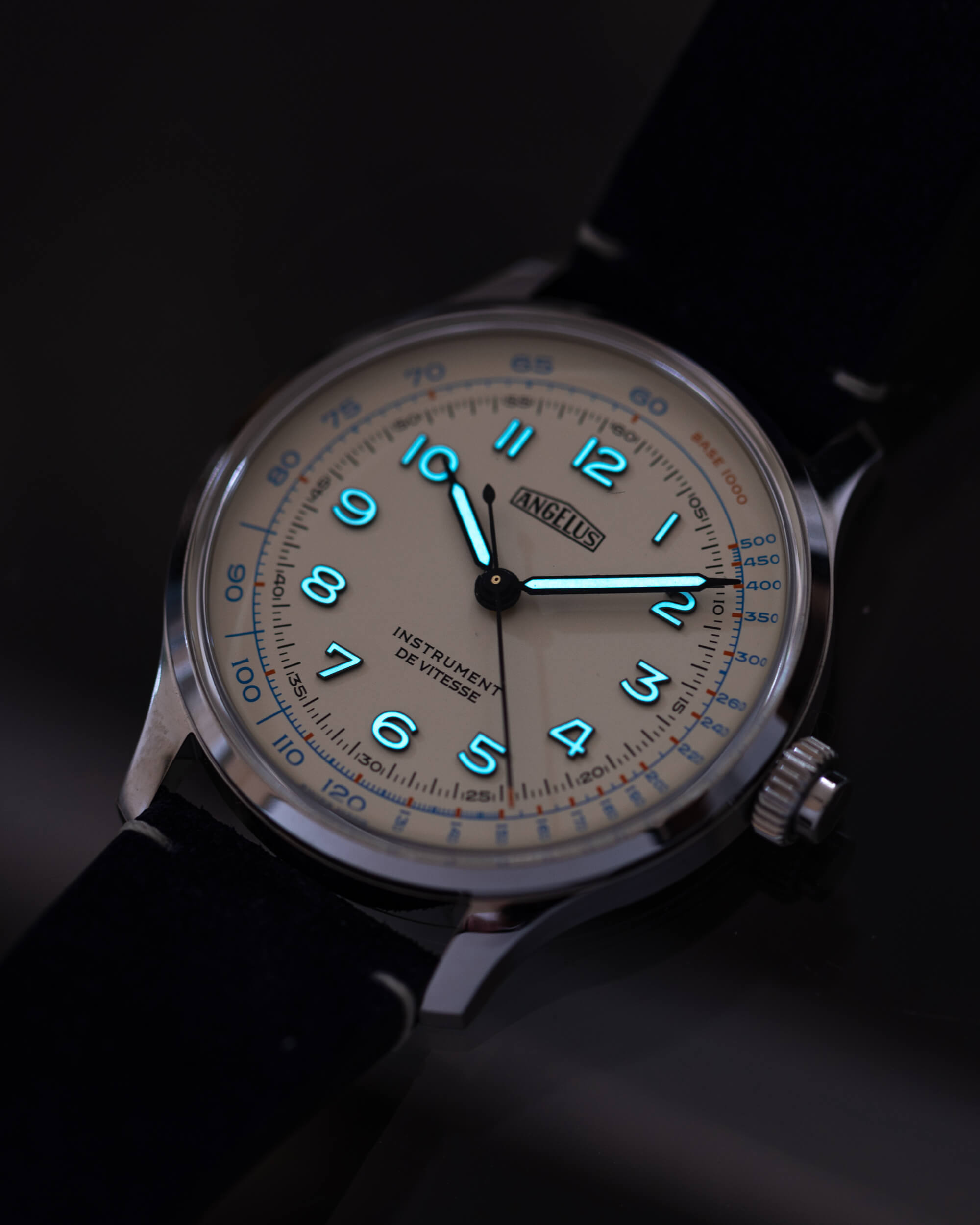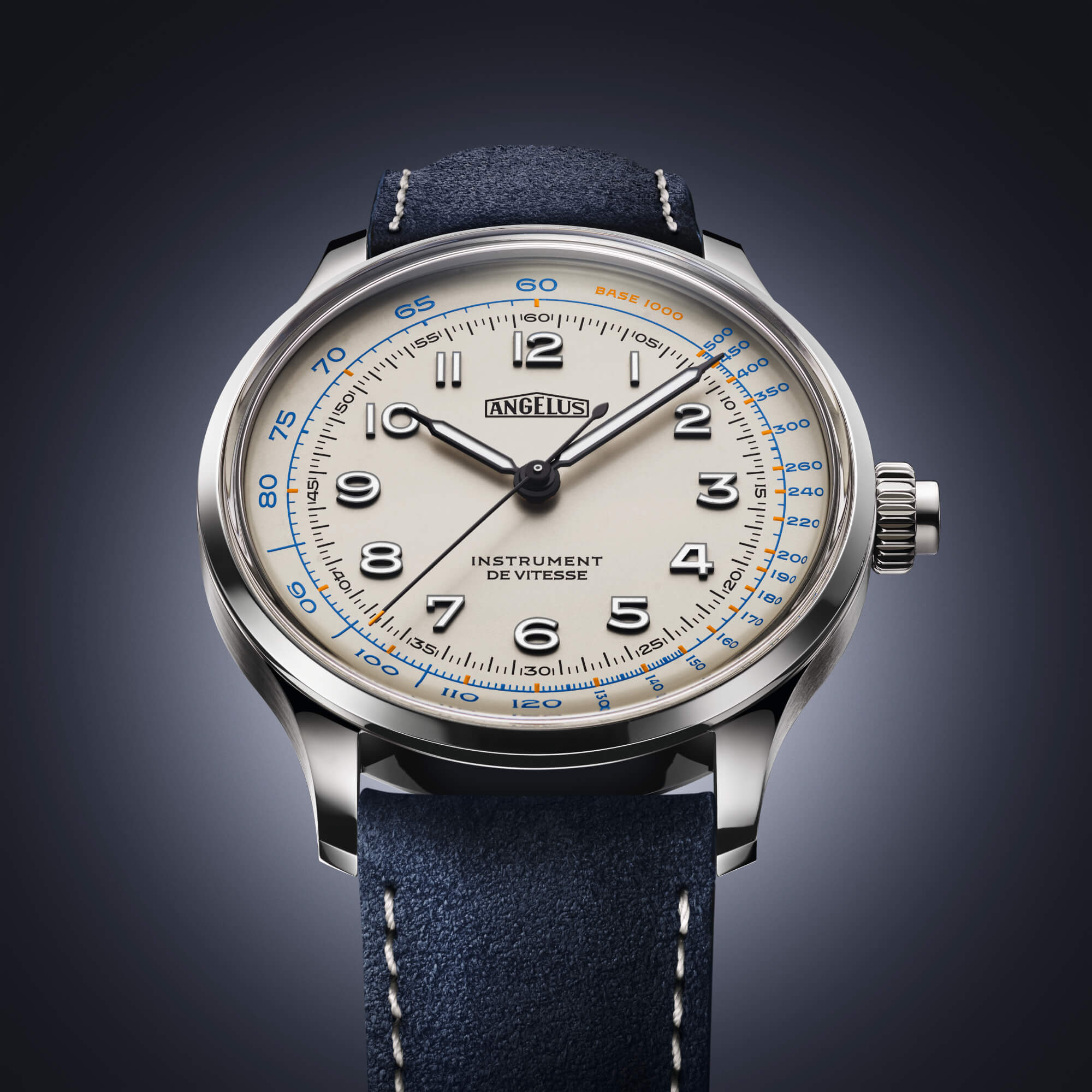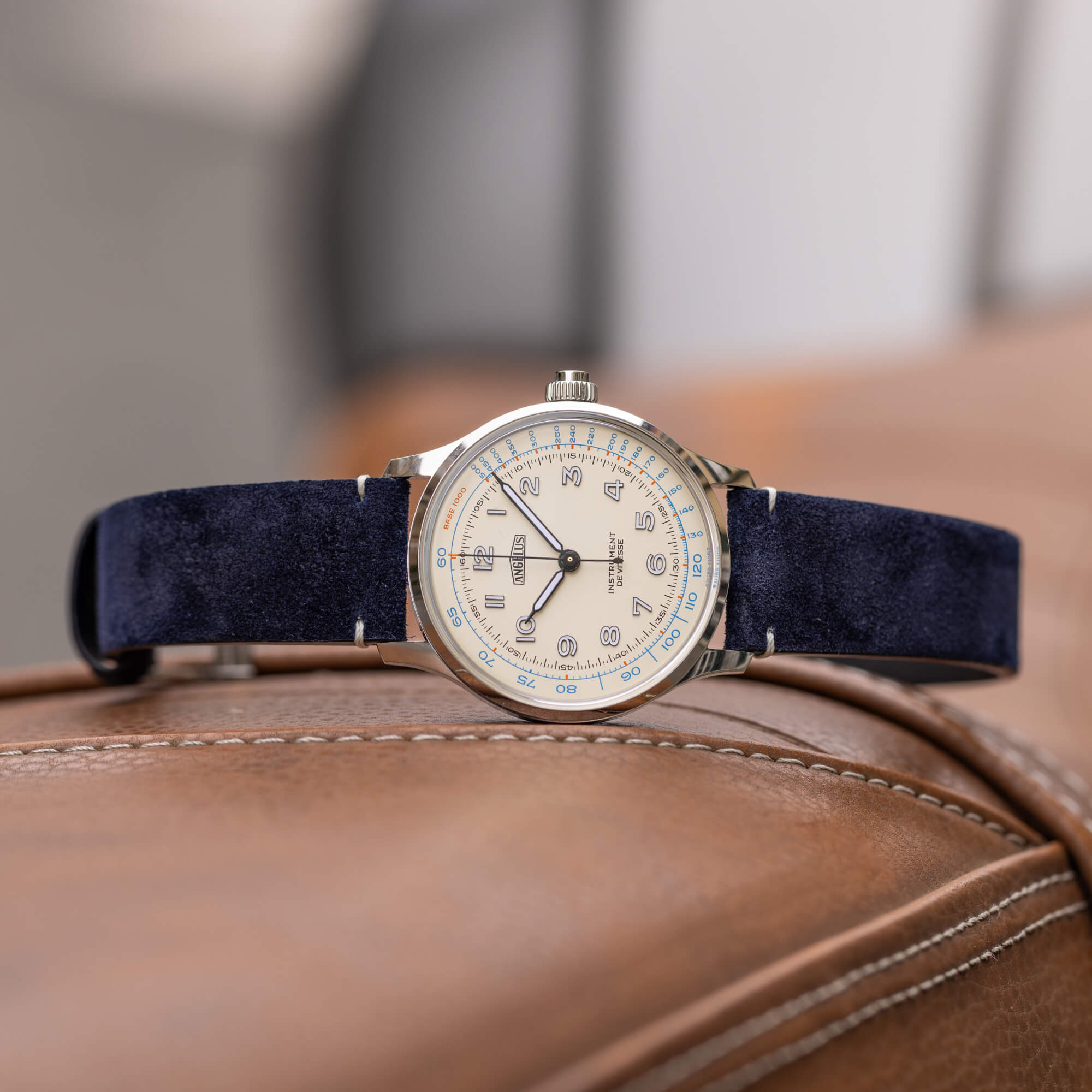
Correct me if I’m wrong (I’m not), but I remember a time when a newly resurrected Angelus had barely-there movement architecture that pared down the mechanics of a timepiece to its essentials and left the rest suspended in colorful bridges, delivering the ultimate skeletonized watch. Remember those? They were awesome, and skeletonization seemed to be the DNA of the brand, for a while. Then, in 2022, the brand released the solid-dial Chronodate — not a skeletonized component to be seen! Imagine my shock when Angelus collaborated with Massena Lab for a doctor’s watch. Well, here we are, and I suppose this is the natural progression. For Watches and Wonders Geneva 2024, the brand seems to be fully committing to hiding the movement from us and has introduced the Angelus Instrument Vitesse, a central-second monopusher chronograph offered in two dials that builds off its collab with Massena Lab.
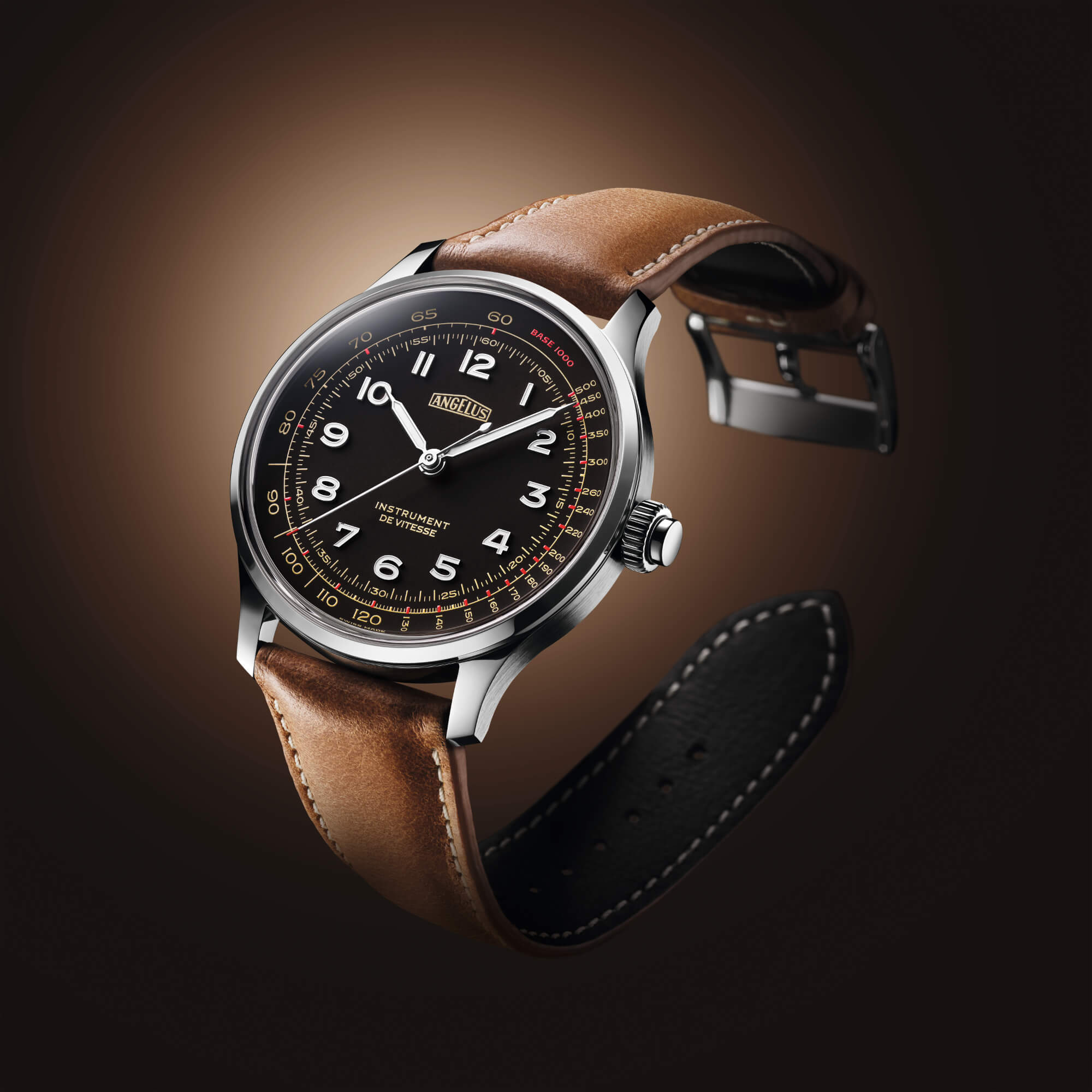
The new Angelus Instrument de Vitesse has an exceedingly simple case. The 39mm case comes in at just 9.27mm thick, meaning it will wear almost perfectly on almost any wrist. It’s mostly polished but has brushed sides to break things up a bit. It comes with a domed sapphire crystal with AR coating and is water resistant to just 30 meters. Of note, of course, is the crown-integrated monopusher for the chronograph. While the Massena Doctor’s Watch collab had a separate pusher located at 2, there’s clearly been some movement tinkering to reposition it at 3 o’clock with the crown. It’s a cleaner look, for sure, and one that seems to be more impressive to people. The watches are paired with leather straps with pin buckle closures, brown calfskin for the black dial, and blue nubuck for the white dial.
Two dial options are available: an ivory white and what the brand redundantly calls ebony black. (I’d argue “ivory” isn’t redundant because ivory is not a pure white.) Both dials feature Base 1000 tachymeter scale around the periphery, printed in blue and orange on the ivory dial and in caramel and red on the ebony dial. Just inside that scale is a traditional 60-second scale. To mark out the time, the dials have applied Arabic numerals filled with Super-LumiNova that appear to shine quite nicely. They’re matched by syringe hands displaying the hours and minutes. There’s no running second display, but instead, the centrally mounted seconds hand serves as the sole chronograph indicator. That means that for those actually thinking about using this to time things, you’ll be limited to one-minute events (or remembering how many times it’s gone ’round). As someone who doesn’t use the chronographs he does own, I don’t have an issue with this limitation, especially considering the vintage vibes here. That said, other, modern central seconds chronographs that scratch this functional itch and deliver far more, perhaps most recently the Carl F. Bucherer Manero Central Counter.


The movement behind the new Instrument de Vitesse (that means Speed Instrument, if you were wondering), is the Angelus A5000. The manual winding monopusher chronograph delivers 42 hours of power at 21,600 vph. The real story here lies in the movement’s history. First, know that Angelus is owned by La Joux-Perrex and subsequently by Citizen Group. The A5000 is constructed by LJP, but is an evolution of a caliber with quite the pedigree: the THA 045MC. The 045MC was designed by Francois-Paul Journe and Denis Flageollet in a joint venture called Techniques Horlogères Appliquées, and before either of them had launched their now renowned brands (F.P. Journe and de Bethune, respectively). That movement was first used in the Cartier CPCP Monopuissor. That backstory may be the most impressive thing about this entire watch.
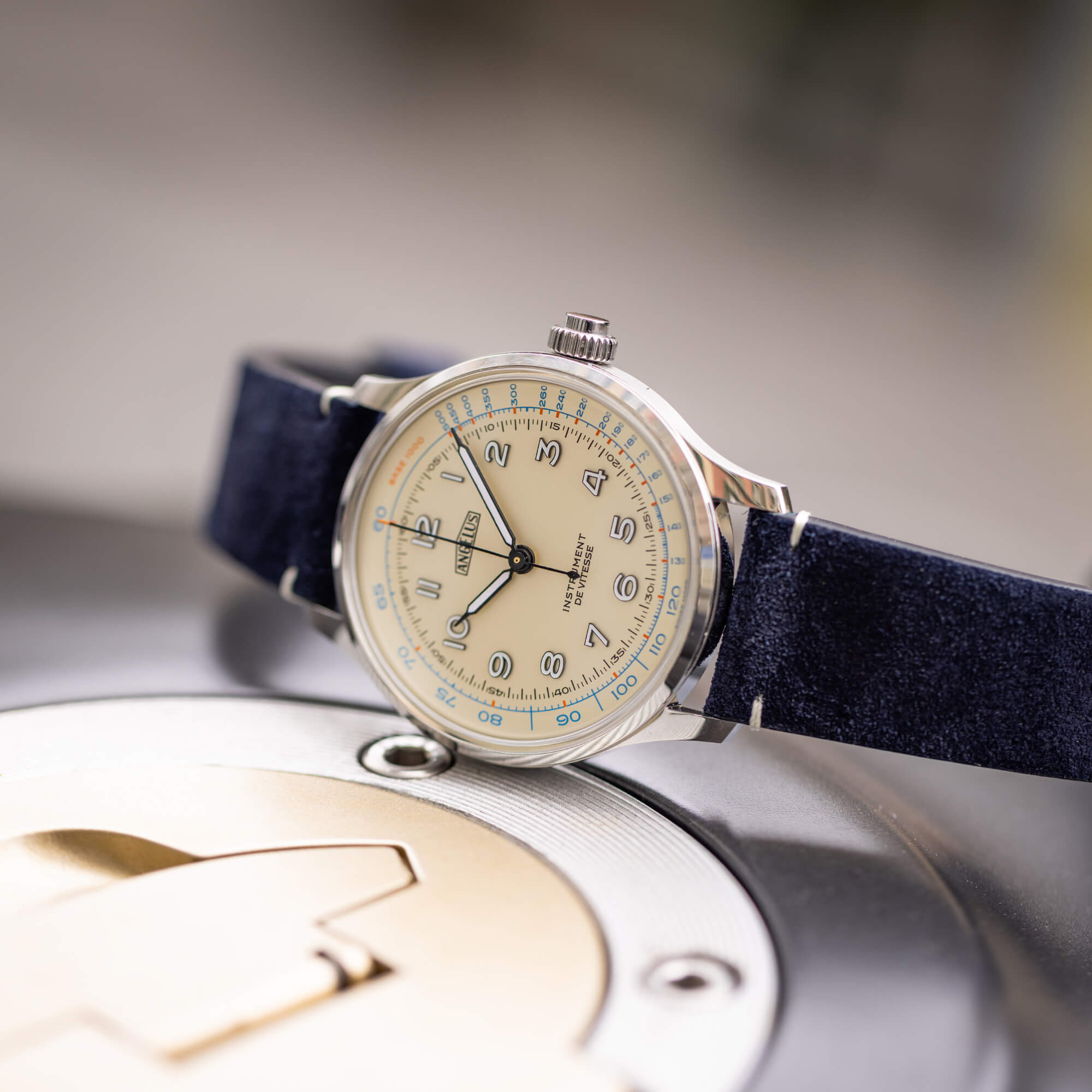
Perhaps this isn’t the nail in the coffin I think it is for Angelus’ exciting designs, but looking at the brand’s catalog, there’s just one watch with a skeletonized tourbillon movement. It’s the only watch in the catalog that is skeletonized or that has a tourbillon — please send a doctor to check on our good friends at Angelus to make sure nothing’s happened to them. The thing about the U20 and other more daring Angelus models was that you could see and feel the value not just in the movement and materials, but in the design itself. Here, while there’s plenty of vintage charm, it’s hard to know what I’d be paying for beyond the movement. The Angelus Instrument de Vitesse is priced at CHF 17,100 (incl. VAT) and limited to 25 pieces in each colorway. For more information, please visit the Angelus website.

